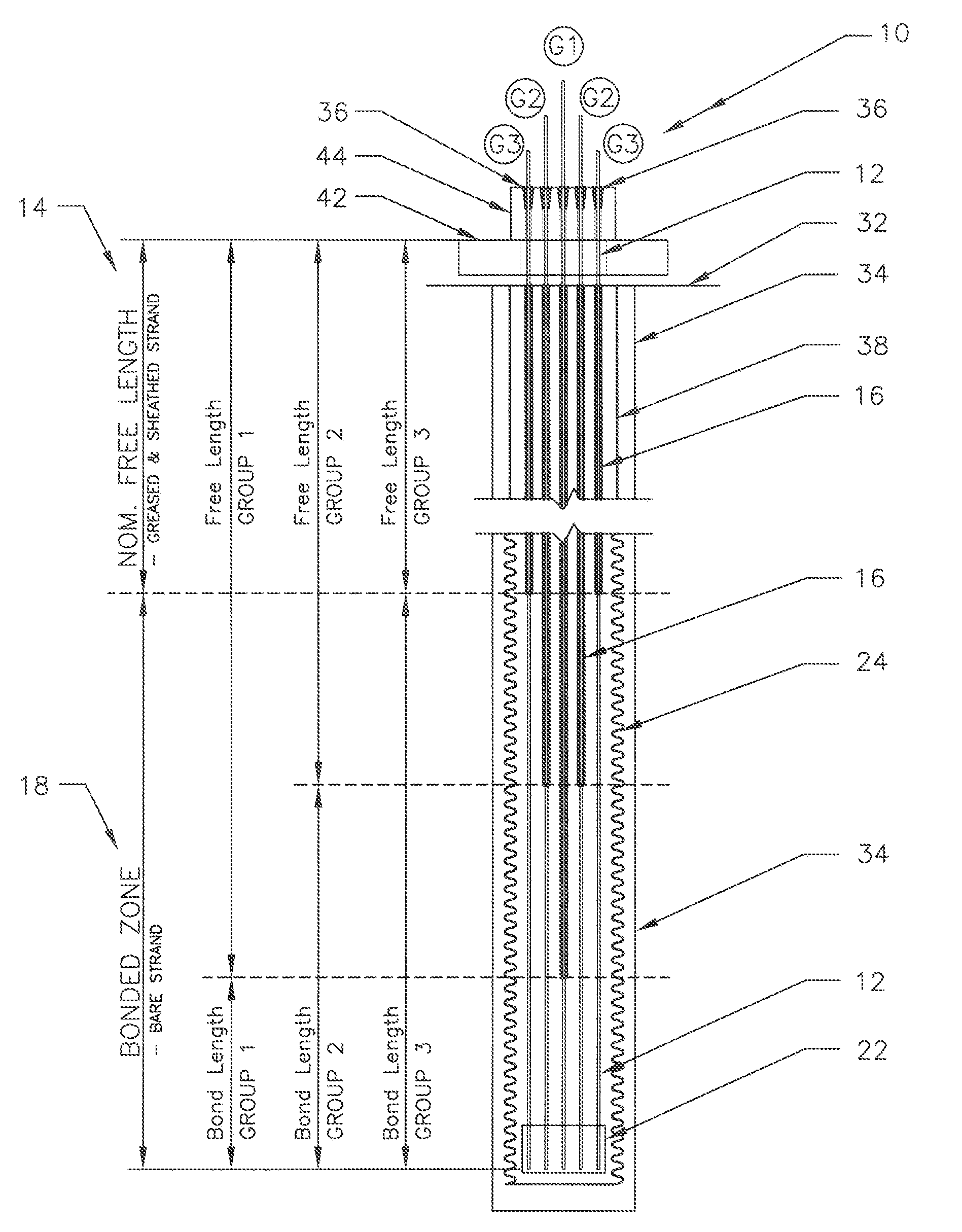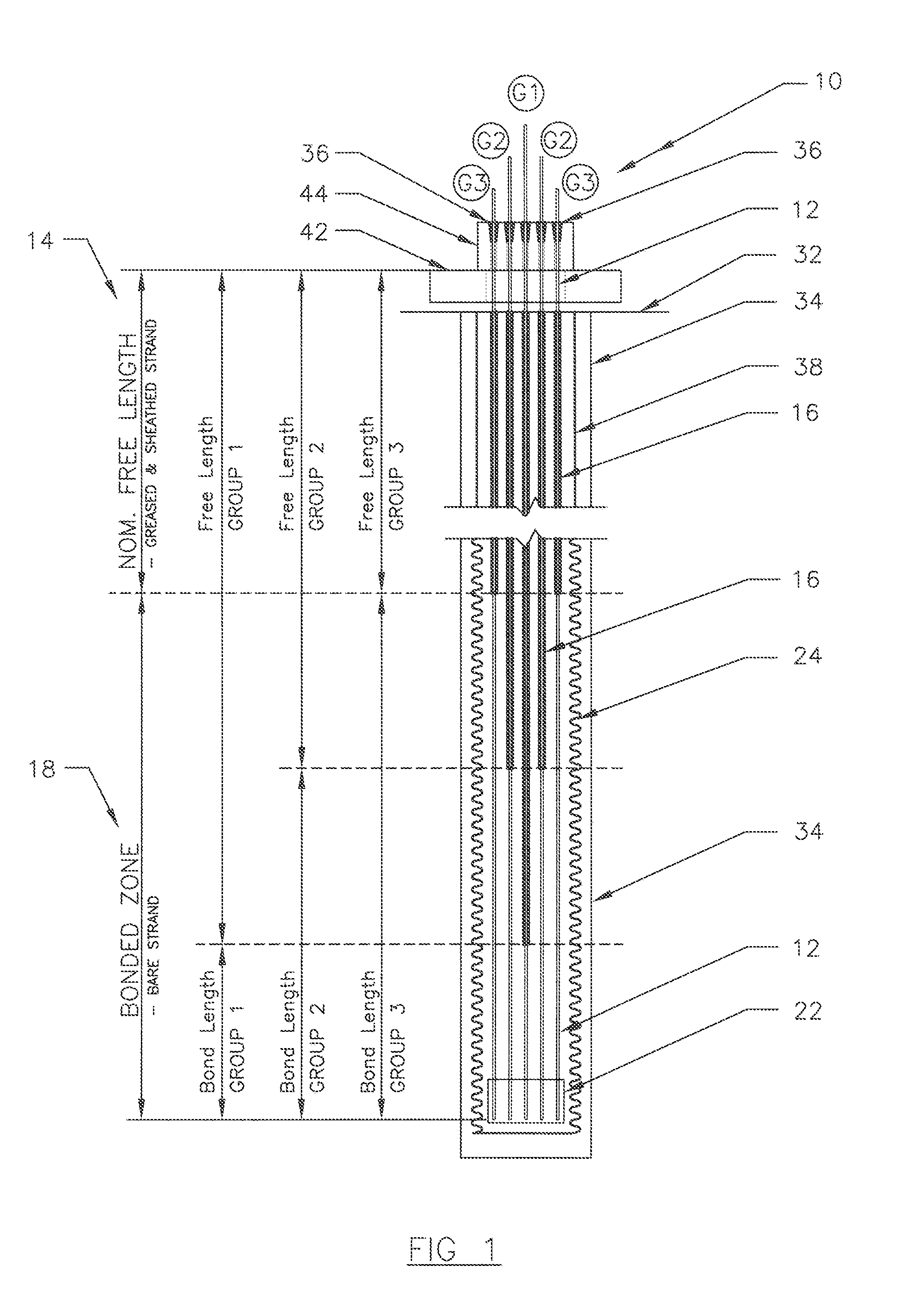System for anchoring a load
a load and system technology, applied in the field of anchoring systems, can solve the problems of limited current ground anchoring technology, high stress on the anchoring tendons, and prone to corrosion, and achieve the effect of increasing the load transfer capacity of the anchoring tendons with multiple tensile elements
- Summary
- Abstract
- Description
- Claims
- Application Information
AI Technical Summary
Benefits of technology
Problems solved by technology
Method used
Image
Examples
Embodiment Construction
[0045]A unitary anchoring tendon 10 suitable for use in a method embodied by the invention is shown in FIG. 1. The tendon has a plurality of tensile elements in the form of multi-wire steel strands 12 each of which has a free length 14 received within a respective sleeve 16, and a bond length 18. The bond lengths 18 of the strands 12 terminate in the nose of the tendon generally indicated by the numeral 22 and are fixed together in the tendon's nose at their leading ends by an epoxy or suitable fixing system. In practice, the nose 22 is generally round ended as conventionally known to assist insertion of the tendon down the corrugated sheath 24 as further described below. The strands 12 of the tendon each comprise a central king wire about which a plurality of outer wires (typically 6) are spirally wound around. A seal (not shown) is located on the end of each sleeve 16 at the transition between the bond length and the free length of respective of the strands to stop entry of water ...
PUM
 Login to View More
Login to View More Abstract
Description
Claims
Application Information
 Login to View More
Login to View More - R&D
- Intellectual Property
- Life Sciences
- Materials
- Tech Scout
- Unparalleled Data Quality
- Higher Quality Content
- 60% Fewer Hallucinations
Browse by: Latest US Patents, China's latest patents, Technical Efficacy Thesaurus, Application Domain, Technology Topic, Popular Technical Reports.
© 2025 PatSnap. All rights reserved.Legal|Privacy policy|Modern Slavery Act Transparency Statement|Sitemap|About US| Contact US: help@patsnap.com



